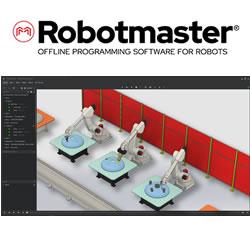Fully Autonomous Hamburger Line
Watch PBS NOVA Episode "Rise Of The Drones"
Adept's New Material Automation Robot
Filling A Room With Single-line Drawing
CES Gets Robots All Wrong
Case Study: Miltenyi Biotec, Cell Analyzers with 2D Barcode Readers
Swarm Of Pingpong-Ball-Sized Robots
OpenBeam
New Lego Mindstorm EV3 With Linux-based OS
NASA Kicks Off 2013 First Robotics Season With Live Broadcast Jan. 5
Automate 2013
The Patent Grip Loosens
Interview With Gard Van Antwerp Of Reis Robotics
Evaluating Barcode Reading Technologies
Interview with Jay Liew of Double Robotics
Records 3466 to 3480 of 3729
First | Previous | Next | Last
Featured Product

Robotmaster 2024
Robotics and Automation - Featured Company

